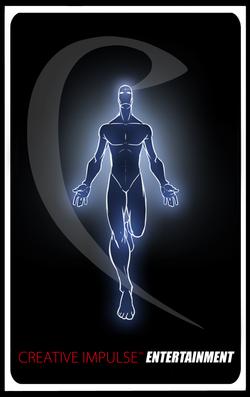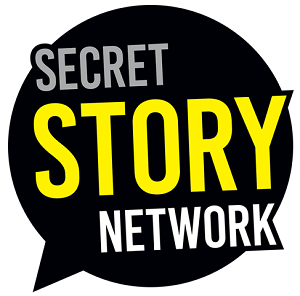
A role-playing game is a game in which players assume the roles of characters in a fictional setting. Players take responsibility for acting out these roles within a narrative, either through literal acting or through a process of structured decision-making regarding character development. Actions taken within many games succeed or fail according to a formal system of rules and guidelines.
An alternate reality game (ARG) is an interactive networked narrative that uses the real world as a platform and employs transmedia storytelling to deliver a story that may be altered by players' ideas or actions.
Technological convergence is the tendency for technologies that were originally unrelated to become more closely integrated and even unified as they develop and advance. For example, watches, telephones, television, computers, and social media platforms began as separate and mostly unrelated technologies, but have converged in many ways into an interrelated telecommunication, media, and technology industry.
Interactive storytelling is a form of digital entertainment in which the storyline is not predetermined. The author creates the setting, characters, and situation which the narrative must address, but the user experiences a unique story based on their interactions with the story world. The architecture of an interactive storytelling program includes a drama manager, user model, and agent model to control, respectively, aspects of narrative production, player uniqueness, and character knowledge and behavior. Together, these systems generate characters that act "human," alter the world in real-time reactions to the player, and ensure that new narrative events unfold comprehensibly.
A story arc is the chronological construction of a plot in a novel or story. It can also mean an extended or continuing storyline in episodic storytelling media such as television, comic books, comic strips, board games, video games, and films with each episode following a dramatic arc. On a television program, for example, the story would unfold over many episodes. In television, the use of the story arc is common in sitcoms, and even more so in soap operas. In a traditional Hollywood film, the story arc usually follows a three-act structure. Webcomics are more likely to use story arcs than newspaper comics, as most webcomics have readable archives online that a newcomer to the strip can read in order to understand what is going on. Although story arcs have existed for decades, one of the first appearances of the term was in 1973 by Time Magazine for a synopsis of the movie The Friends of Eddie Coyle: "He accomplishes this with no sacrifice to the pacing of his action sequences or the suspenseful development of his story's arc."

In visual arts, a model sheet, also known as a character board, character sheet, character study or simply a study, is a document used to help standardize the appearance, poses, and gestures of a character in arts such as animation, comics, and video games.

Henry Guy Jenkins III is an American media scholar and Provost Professor of Communication, Journalism, and Cinematic Arts, a joint professorship at the University of Southern California (USC) Annenberg School for Communication and Journalism and the USC School of Cinematic Arts. He also has a joint faculty appointment with the USC Rossier School of Education. Previously, Jenkins was the Peter de Florez Professor of Humanities as well as co-founder and co-director of the Comparative Media Studies program at the Massachusetts Institute of Technology (MIT). He has also served on the technical advisory board at ZeniMax Media, parent company of video game publisher Bethesda Softworks. In 2013, he was appointed to the board that selects the prestigious Peabody Award winners.
Digital storytelling is a short form of digital media production that allows everyday people to create and share their stories online. The method is frequently used in schools, museums, libraries, social work and health settings, and communities. They are thought to have educational, democratizing and even therapeutic effects.
Nonlinear narrative, disjointed narrative, or disrupted narrative is a narrative technique where events are portrayed, for example, out of chronological order or in other ways where the narrative does not follow the direct causality pattern of the events featured, such as parallel distinctive plot lines, dream immersions or narrating another story inside the main plot-line. The technique is common in electronic literature, and particularly in hypertext fiction, and is also well-established in print and other sequential media.
A media franchise, also known as a multimedia franchise, is a collection of related media in which several derivative works have been produced from an original creative work of fiction, such as a film, a work of literature, a television program, or a video game. Bob Iger, chief executive of the Walt Disney Company, defined the word franchise as "something that creates value across multiple businesses and across multiple territories over a long period of time.”
Multi-platform television is "a mode of storytelling that plays itself out across multiple entertainment channels". Each medium that the story unfolds across makes a distinctive contribution.
A motion comic is a form of animation combining elements of print comic books and animation. Individual panels are expanded into a full shot while sound effects, voice acting, and animation are added to the original artwork. Text boxes, speech bubbles and the onomatopoeia are typically removed to feature more of the original artwork being animated. Motion comics are often released as short serials covering a story arc of a long running series or animating a single release of a graphic novel. Single release issues of a story arc are converted into ten- to twenty-minute-long episodes depending on content.
A social film is a type of interactive film that is presented through the lens of social media. A social film is distributed digitally and integrates with a social networking service, such as Facebook or Google+. It combines features of web video, social network games and social media.

Creative Impulse Entertainment is a transmedia production company founded by Jan Lucanus in 2003. With the company mantra "Intrigue, Entertain, Inspire Social Change", CIE bills itself as a home for artists that create content across multiple forms of media. CIE's production portfolio encompasses comic books, film, video, animation, music, and games, with subsidiaries dedicated to each craft.
Transmediality is a term used in intermediality studies, narratology, and new media studies (in particular in the phrase ‘transmedia storytelling’ derived from Henry Jenkins, to describe phenomena which are non-media specific, meaning not connected to a specific medium, and can therefore be realized in a large number of different media, such as literature, art, film, or music. The medium from which a given phenomenon originated is either irrelevant or impossible to determine; it is not an adaptation of a phenomenon from one medium to another.
Nuno Bernardo is a Portuguese writer, producer and director. Nuno has become recognized for his ability to create innovative stories that are told across multiple platforms. In the last decade, using his unique approach to storytelling, Nuno has created and produced more than 200 hours of entertainment, from feature films and TV shows to videogames and books.
Video game writing is the art and craft of writing scripts and narratives for video games. Similar to screenwriting, it is typically a freelance profession. It includes many differences from writing for film, due to the non-linear and interactive nature of most video games, and the necessity to work closely with video game designers and voice actors. There are many differing types of text in video games in comparison to stage shows or movies, including written text, foreign or made-up languages, and often situation-based information. Especially when developing Triple A games, more than one writer will be required to create the game, split into different roles.
Convergence culture is a theory which recognizes changing relationships and experiences with new media. Henry Jenkins is accepted by media academics to be the father of the term with his book Convergence Culture: Where Old and New Media Collide. It explores the flow of content distributed across various intersections of media, industries and audiences, presenting a back and forth power struggle over the distribution and control of content.

Secret Story Network is an online interactive storytelling experience which operates live role-playing games. Hosted over WhatsApp, SSN was created in 2017 by film, multimedia, and transmedia artist Krishna Stott, creative developer at Bellyfeel, and known for the earlier award-winning interactive film projects Crimeface (2008) and Bolton Storyworld: Codename Winterhill (2016).
Christy Dena is an Australian writer, game designer, and scholar. Her scholarship and design practice in transmedia storytelling has been widely cited, especially for promoting the term "cross-media storytelling". She is also known for defining the term "transmedial fictions" for The Johns Hopkins Encyclopedia of Digital Textuality. She created her own studio, Universe Creation 101, where she creates original projects and does consultations and freelance work. She likes to combine live social experiences with online technology, traditional forms of screen and paper-based objects.




